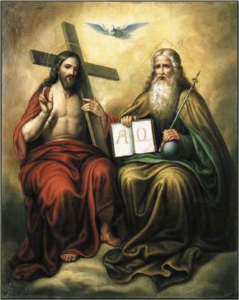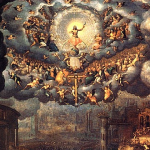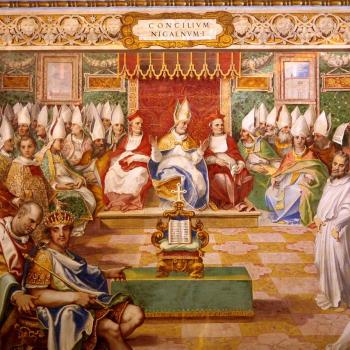 The doctrine of eternal generation (EG) raises a lot of questions, because it’s a doctrine that is in many ways mysterious. At the same time, however, it can be described and affirmed. When scholars and pastors seek to describe and affirm EG, they look at passages such as John 3:16 and the word “begotten” along with a host of others that discuss the divinity and humanity of Jesus.
The doctrine of eternal generation (EG) raises a lot of questions, because it’s a doctrine that is in many ways mysterious. At the same time, however, it can be described and affirmed. When scholars and pastors seek to describe and affirm EG, they look at passages such as John 3:16 and the word “begotten” along with a host of others that discuss the divinity and humanity of Jesus.
EG also raises questions about whether or not Jesus was created, and how he can be an eternal Son and yet not be eternally lesser than or submissive to his Father. How can a son be a son if he wasn’t born sometime after his father? We could go on.
While, again, EG is largely a mystery to us, it’s a doctrine that helps us biblically and theologically make sense of the relationship between the Father and Son. As I teach on the Trinity and related subjects at colleges and in my local church, I’ve found a few basic points to be helpful in explaining EG.
1. We Use Finite Language to Explain an Infinite Truth
First of all, we have to acknowledge that Trinitarian language is an imperfect attempt at describing a perfect God. If we could fully exhaust the doctrine of the Trinity, we’d likely not be talking about God. “Oneness” and “threeness” give us some handles, but even these words come short in truly explaining the mystery of the Trinity.
He is near to us and has revealed himself to us, but we can only understand so much this side of eternity. This doesn’t mean we don’t try or that God is holding out on us; it means we accept our best finite attempts for what they are—finite. Praise God, he’s revealed himself to us in Scripture, and we’ll one day see him face-to-face and will no longer crave to know him fully and unhindered (Rev. 21-22).
2. The Son Must Have the Same Nature as the Father
The Son cannot be created. The Father is eternal, and therefore his Son must be. The Son is only a Son if his nature matches his Father’s. You are welcome to call your dog your “child,” but it isn’t your child. A person can’t birth something from a different nature/species.
This is also why adoptionist Christology does us no good. If Jesus was adopted later as God’s Son, he would not be co-eternal with the Father and share fully in all his attributes. He’d be a son in the adopted sense, but not in the most proper sense. There’d be an ontological firewall between them, regardless of titles and roles. But the Son is fully God and shares in the Father’s (and Holy Spirit’s) nature, authority, glory, and power. Therefore, he is not adopted or created, but rather co-equal.
3. The Father’s Son Isn’t Exactly Like Our Sons
The Son was not “born” like our children are. Yes, in the incarnation, the Son was born of a virgin as the God-man Jesus Christ, but that’s not in question here. We’re discussing his eternal nature and relationship to the Father outside of time and space, before the foundation of the world.
Origen—even with his faults—gives us decent language to work with, when he says that the Son’s EG is a type of “eternal birth.” We cannot understand how someone could have existed eternally and somehow be “born”—this goes back to our finite language failing us. But EG tells us that in some way, the Son relates to the Father like any son to a father, but in an eternal and non-subordinate way. The doctrine of EG simply makes the best use of biblical language about the Father and Son (“begotten,” “from the Father,” “all things were created by him and through him,” “the firstborn over all creation.” etc.), recognizing that the language only gets us so far.
Though EG can be confusing, it’s an historic and orthodox doctrine to affirm and celebrate. Jesus Christ is not just a man with a special blessing from God—he’s his eternal Son, fully divine and yet willing to become an obedient man to be the second Adam and the substitute for our sins (Phil. 2:5-11).
—
Stay in touch! Email me at [email protected].











